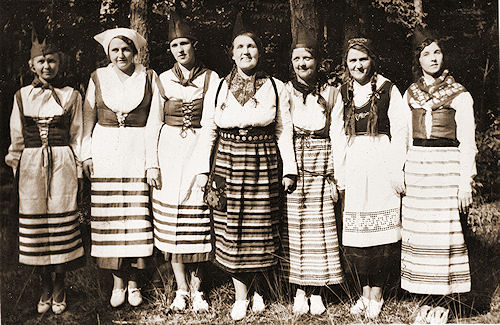SILVERHILL SETTLEMENT
by John Jackson

Baldwin County residents can easily make the argument that they live in one of the most culturally diverse regions in the Southeast and quite possibly the most culturally rich region in the state of Alabama. And what's more, county residents can point to two distinct migrations that fueled that diversity. In the 300+ years that span the 16th century to the 19th Baldwin has witnessed some of North America's earliest exploration by the French, English, and Spanish. In addition Baldwin had already been the site of a thriving mound building Indian culture generations prior to the arrival of Europeans. The second wave of immigrants to Baldwin County arrived late by most American immigrant standards, yet has had a profound effect on population growth patterns and economic benchmarks in 21st century Baldwin County. This late wave of immigration took place around the turn of the 20th century and included many of the nationalities that founded the major urban centers of Baldwin County. The Scandinavians of Silverhill are one of these very influential people.

|
|
Seven young women in Swedish costumes about 1933 (left to right):
Violet Gustafson (Linden),
Evelyn Linden (Rundquist),
Evelyn Ledeen,
Ruby Ledeen,
Anna Linder (Andersen), Unknown, Elsie Chandler.
|
While not the first group to make Baldwin County their home, the Scandinavians that settled in Silverhill had a significant impact on the central portion of the county creating thriving farm communities that have come to symbolize the agricultural success that was, along with the timber industry, the dominant trade in the county prior to the tourism boom. The colony originated as the idea of Oscar Johnson, C.O. Carlson, and C.P. Valentine as a means of establishing a Scandinavian colony.
The Svea Land Company formed in Chicago in 1890 by Johnson and others as a means to provide other like-minded immigrants scattered throughout the American Midwest the opportunity to acquire land in a mild climate at a reasonable rate. In turn, the land company sponsored an in-depth investigation of available properties that could meet the needs of a farming community and could be bought in blocks for settlement. Over time lands in Mobile County were toured as a potential site, but were rejected in favor of the central Baldwin area which is now the site of Silverhill and Robertsdale. The initial land purchase was made soon after and the first families began arriving in Baldwin County by the end of the year 1896.
Johnson openly promoted the settlement of the Silverhill region through newspaper advertisement and the distribution of pamphlets throughout the U.S. Midwest. An early brochure circulated by the Svea Land Company proclaimed:
"Located in the extreme southern part of the state of Alabama. In Baldwin county, bordering on the beautiful waters of the Gulf of Mexico, Mobile, and Perdido Bays. No winters. Cool summers, moderated by salt sea breezes. No fevers, no contagious diseases. 200 feet above tide water. Fertile soil. Good markets. Good R.R. facilities. All conveniences of a large city."
As settlers arrived they joined together to turn the forested heart of Baldwin County into pasture and farmland. They planted cucumbers as a cash crop and introduced dairy farming with the establishment of a creamery. With the arrival of Dr. O.F.E. Winberg of Chicago the residents of Silverhill added the growth of Satsumas to their list of agricultural crops and to their hopes of success. To form the town proper, the residents built a school, churches, hotels, stores, and other myriad structures and businesses that make up a typical small town. Growth led inevitably to the incorporation of Silverhill into a formal municipality with 36 votes cast in favor of the incorporation and four votes against the move in 1926.
Since incorporation Silverhill has undergone the changes that affected the South in general. Populations have grown and demographics have changed. Many small communities in Baldwin County have survived in memory alone. And yet Silverhill still prospers not so much as hub of the farming community in the county but as a quiet, safe place to live and raise a family. The municipal signs that greet visitors and residents alike say "Welcome to Silverhill, A good place to live." And the residents would echo that sentiment. The town that became a haven for immigrants to Baldwin County had evolved into a haven for those who prefer a quiet, picturesque setting in which to live – a sanctuary away from the "large city" which Oscar Johnson maintained was equaled by Silverhill. And, in many ways the pride of the residents of this small community can be held responsible for its transformation and survival in the 21st century. They have maintained their connection with their roots through the preservation of their history in examples like the Oscar Johnson Library and have used these foundations to make the transition into the future a effortless one.

Written by: John Jackson, October 5, 2010.
Printed in the Gulf Coast Newspapers October 15, 2010.
John Jackson is the Director of the
Baldwin County Department of Archives and History.

|